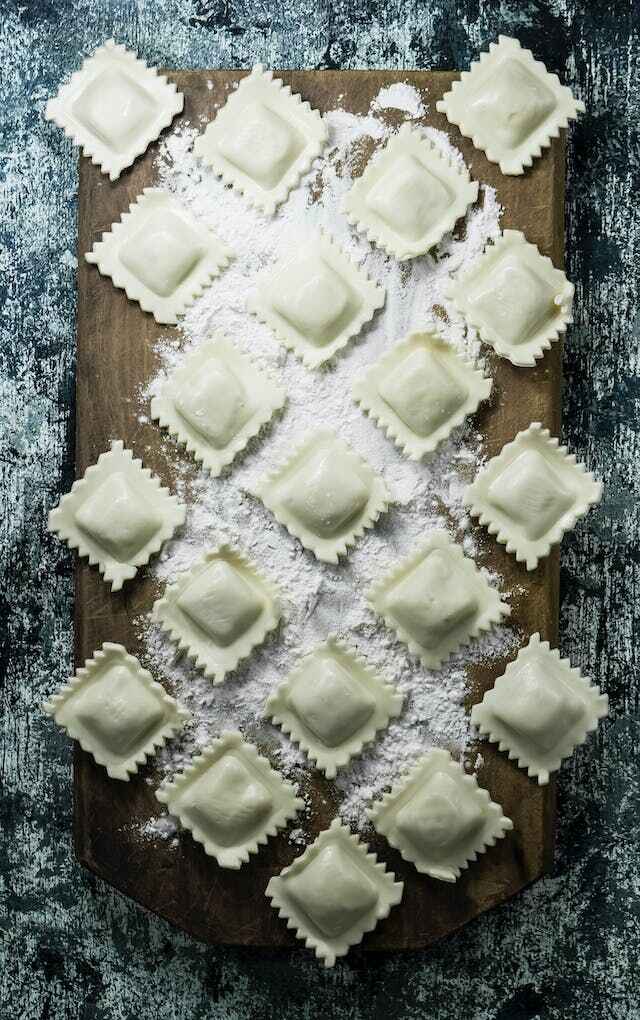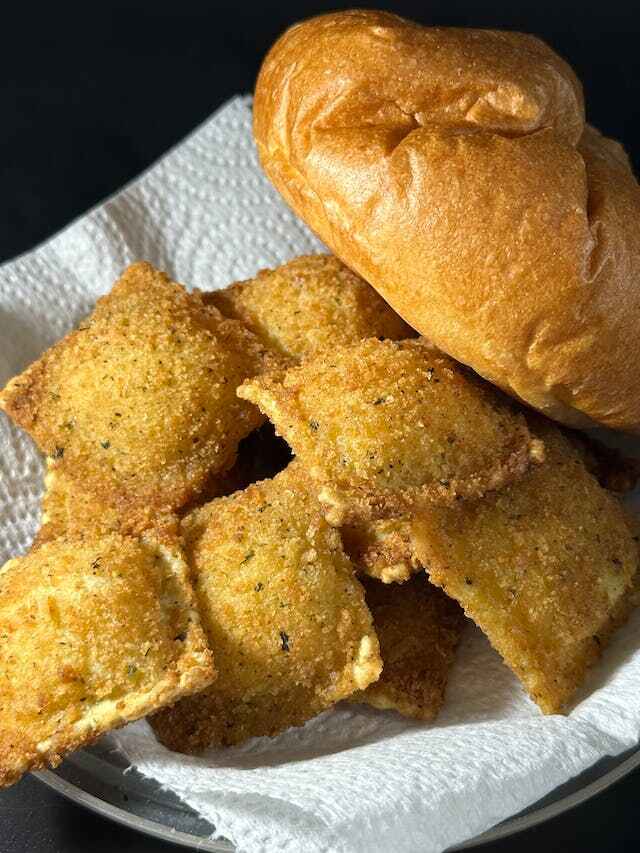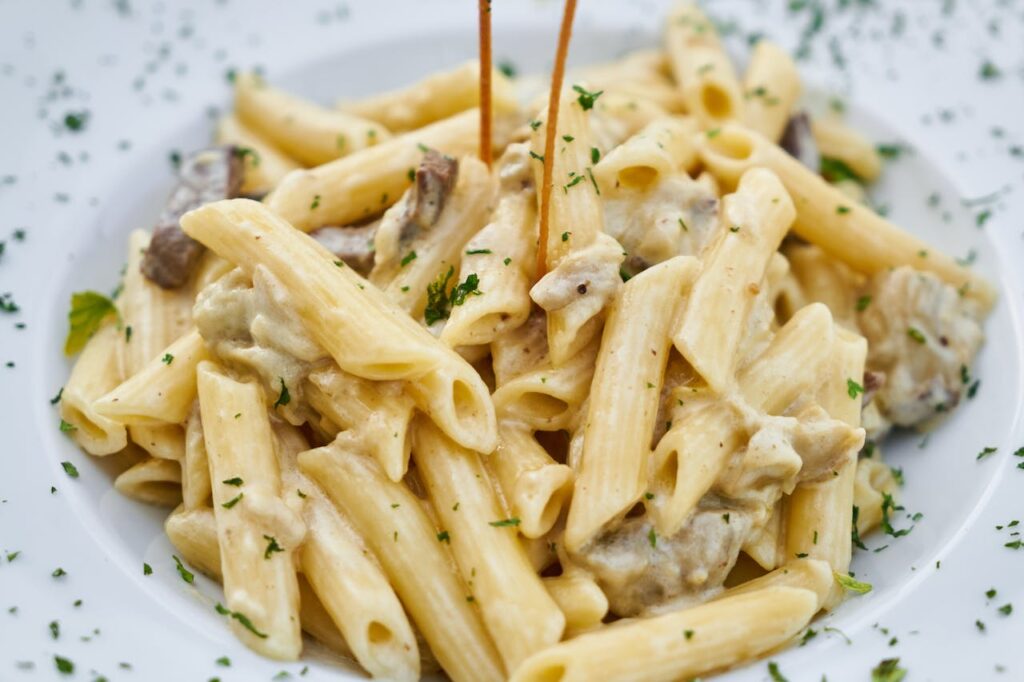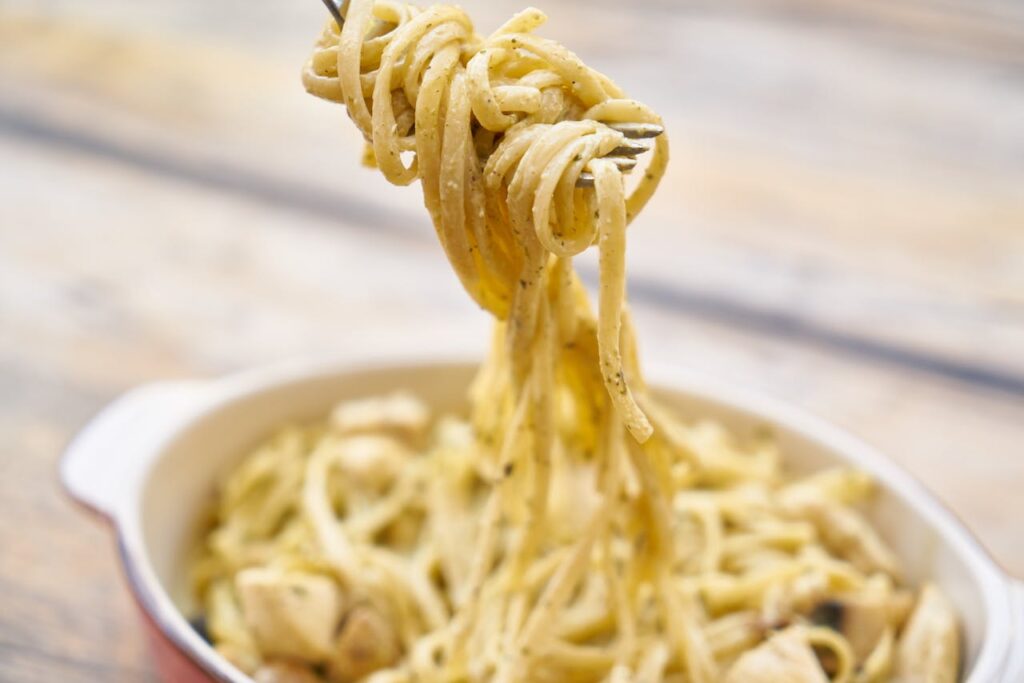Hey there, pasta enthusiasts! If you’ve been dreaming of creating your own delectable ravioli at home, you’ve landed in the right spot. Let’s dive into the world of homemade ravioli pasta and uncover the secrets to crafting this Italian delicacy right in your kitchen.

Table of Contents
Step by Step Homemade Ravioli: From Scratch to Plate
There’s something incredibly satisfying about making ravioli from scratch. It’s easier than you might think! The key to perfect homemade ravioli lies in the dough.
Ingredients For Homemade Ravioli:
- 2 cups all-purpose flour
- 2 large eggs
- Pinch of salt
- 1-2 tablespoons water (if needed)
For the Filling:
- 1 cup ricotta cheese
- 1/2 cup grated Parmesan cheese
- 1/2 teaspoon garlic powder
- 1/2 teaspoon dried basil
- Salt and pepper to taste
Instructions For Homemade Ravioli:

- Make the Dough:
On a clean surface, pour the flour and make a well in the center. Crack the eggs into the well and add a pinch of salt.
Gradually mix the eggs into the flour until a dough forms. If it’s too dry, add a tablespoon of water at a time until the dough sticks together.
Knead the dough for about 8-10 minutes until it becomes smooth and elastic. Cover it with a clean cloth and let it rest for 30 minutes.
- Prepare the Filling:
In a bowl, combine the ricotta cheese, grated Parmesan, garlic powder, dried basil, salt, and pepper. Mix until well combined. Set aside.
- Roll Out the Dough:
After resting, divide the dough into two equal parts. Roll out each part thinly using a rolling pin or pasta machine. Aim for sheets about 1/16 inch thick.
- Fill the Ravioli:
On one sheet of rolled-out dough, place small mounds of the prepared filling, leaving space between each mound. Dip your finger in water and moisten the edges around the filling.
- Seal and Cut:
Gently place another sheet of dough on top, pressing down around each mound to seal the edges and remove air pockets. Use a knife or a ravioli cutter to cut the ravioli into squares or desired shapes.
- Cook the Ravioli:
Bring a large pot of salted water to a boil. Carefully drop the ravioli into the boiling water. Cook for about 3-4 minutes or until they float to the top, indicating they are done.
- Serve and Enjoy:
Once cooked, remove the ravioli with a slotted spoon and serve with your favorite sauce—marinara, Alfredo, pesto, or a drizzle of olive oil and herbs. Garnish with extra Parmesan cheese and fresh basil if desired.
- Storage:
To store any uncooked ravioli, lay them in a single layer on a baking sheet lined with parchment paper and freeze. Once frozen, transfer to a freezer bag and store for up to a month. Cook from frozen when needed.
Yield, Prep time, and Calories
- Yield: Approximately 4 servings
- Prep Time: Around 1 hour
- Calories: The calorie count can vary based on the exact ingredients used and the portion size. On average, a serving of homemade ravioli with the given filling might contain about 300-350 calories.
| Yield | Prep Time | Calories (approx. per serving) |
|---|---|---|
| 4 servings | About 1 hour | 300-350 |
What to Serve with Homemade Ravioli Pasta
Here are some pairing suggestions and sauce ideas to complement homemade ravioli:
Pairing Suggestions:
- A simple green salad with vinaigrette dressing
- Garlic bread or crusty Italian bread
- Steamed vegetables like broccoli, asparagus, or peas
- Grilled chicken or shrimp skewers
- Roasted tomatoes or a Caprese salad with fresh mozzarella, tomatoes, and basil
Ravioli Pasta Sauce Ideas
- Marinara sauce: A classic tomato-based sauce with herbs like basil and oregano.
- Alfredo sauce: A creamy sauce made with butter, cream, and Parmesan cheese.
- Pesto sauce: A vibrant sauce made with basil, pine nuts, Parmesan cheese, garlic, and olive oil.
- Brown butter and sage sauce: Nutty browned butter infused with aromatic sage leaves.
- Tomato cream sauce: A combination of tomato sauce and heavy cream for a rich, creamy flavor.
- Olive oil and herbs: Drizzle olive oil with herbs like basil, parsley, or thyme for a lighter option.
How to Cook Frozen Ravioli

Cooking frozen ravioli is quite simple and doesn’t require thawing. Here’s a straightforward method to cook frozen ravioli:
Boiling Method:
- Boil Water: Bring a large pot of salted water to a rolling boil. Use enough water to allow the ravioli to move freely without sticking together.
- Add Ravioli: Carefully add the frozen ravioli to the boiling water. Stir gently to prevent them from sticking to the bottom of the pot.
- Cook: Let the ravioli cook in the boiling water for about 4-6 minutes or follow the package instructions. They will float to the surface when done.
- Check for Readiness: To ensure they’re properly cooked, taste a piece. The texture should be tender but not mushy.
- Drain and Serve: Once cooked, use a slotted spoon to remove the ravioli from the boiling water. Drain them well and serve with your preferred sauce or toppings.
Remember, the cooking time may vary depending on the thickness and filling of the ravioli, so always refer to the instructions on the package for the most accurate cooking times.
There you have it, folks – the ins and outs of crafting homemade ravioli pasta. So, gather your ingredients, roll up your sleeves, and let your culinary adventure begin! Your taste buds will thank you.
You Might also Like: Penne alla Vodka Pasta
FAQs
Can I freeze homemade ravioli?
Yes, you can freeze homemade ravioli. Place the uncooked ravioli on a baking sheet lined with parchment paper, ensuring they are not touching. Freeze until solid, then transfer to a freezer bag or airtight container. They can be stored for up to a month. Cook them directly from frozen by adding a couple of extra minutes to the cooking time.
How do I prevent my ravioli from sticking together?
To prevent ravioli from sticking together, ensure the dough is properly floured while rolling and cutting. Also, avoid overcrowding the ravioli when placing them on the tray or cooking pot. A light dusting of flour on the finished ravioli can also help prevent sticking.
Can I use different fillings for ravioli?
Absolutely! Ravioli fillings can be versatile. Traditional options include ricotta cheese, spinach, meat, or butternut squash. Get creative and experiment with various cheeses, herbs, vegetables, or even seafood for unique and flavorful fillings.
How long does homemade ravioli dough need to rest?
Allowing the ravioli dough to rest is crucial for the gluten to relax, making it easier to roll out and work with. Let the dough rest, covered, for at least 30 minutes to an hour at room temperature.
Can I use a pasta machine to roll out the dough for ravioli?
Yes, a pasta machine can be a handy tool for rolling out the dough to a consistent thickness, which is important for making uniform ravioli. Start with the widest setting and gradually roll the dough thinner until the desired thickness is achieved.
How do I seal ravioli properly?
To seal ravioli properly, ensure the edges are moistened with water or beaten egg before pressing them together. Press firmly around the filling to remove air pockets and create a tight seal to prevent them from opening while cooking.
What are some serving suggestions for ravioli?
Ravioli pairs well with a variety of sauces such as marinara, Alfredo, pesto, or a simple drizzle of olive oil and herbs. Additionally, serving ravioli with a side of salad, garlic bread, or steamed vegetables can make a well-rounded meal.



Pingback: Delicious Linguine alle Vongole Recipe: A Tasty Pasta Dish 2024 - Gaze Bloom